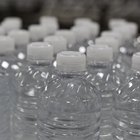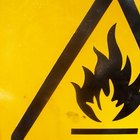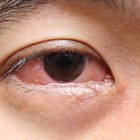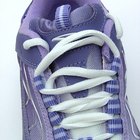
John Howard/Photodisc/Getty Images
Life without cell phones and computers is unimaginable for most people. Your electronic devices (e-devices) are invaluable, but you may wonder if they are safe. You see cool-colored plastic on the outside, but may wonder what's going on inside the device. Tantalum is used to make capacitors, which store electrical energy. Tantalum capacitors involve terminals, metal plates and other impressive-sounding terms, but in the end, all you probably want to know is that they make your e-devices work efficiently, without risk to your health.
What is tantalum?

buhanovskiy/iStock/Getty Images
Tantalum (Ta) is a black-gray metal, number 73 in the Periodic Table of Elements. According to the United States Geological Survey, tantalum's major use is in the production of electronic components. More than 60 percent of this mined element is used to make capacitors for cellphones, pagers, personal computers, video cameras and automotive electronics. Tantalum is highly resistant to corrosion, a good conductor of heat and electricity, and has a high melting point. Tantalum is not mined in the United States, but imported from countries such as Australia, Brazil and Canada.
How Is tantalum regulated?
The Center for Disease Control (CDC) issues the “Occupational Health Guidelines for Tantalum Metal and Oxide Dusts.” These regulations apply to work environments where large amounts of tantalum are on-site, and are prefaced with “tantalum dust has a low order of toxicity.”
CDC Chemical Safety Cards advise in the events of combustion, explosion, inhalation and exposure.
Danger of combustion
Tantalum, as powder, is to be shipped and stored in airtight containers. In industrial use, dry tantalum powder or granules may spontaneously ignite on contact with air, and must not be around open flames, sparks, or smoking. If combustion occurs in a confined space, it may turn into detonation. Fires involving tantalum must be put out with dry sand. Carbon dioxide, foam or water extinguishers are not to be used.
Danger of explosion
Finely dispersed particles of tantalum powder can form explosive mixtures in the air. Dispose of dust in a closed system. In case of fire, cool storage drums by spraying with water, but avoid direct contact of the substance with water.
Danger of inhalation
Avoid breathing in tantalum dust, as inhalation can cause cough. If inhalation occurs, get to fresh air and rest. Consult with doctor as needed.
Danger of exposure

Peter Anderson/Dorling Kindersley RF/Getty Images
For skin protection, wear protective gloves when handling tantalum. If skin is exposed, remove contaminated clothing and rinse; wash skin with soap and water. For eye protection, wear safety spectacles when working with tantalum. If exposed, expect redness and rinse eyes with water for several minutes. Remove contact lenses if feasible, and get to a doctor as soon as possible. For mouth protection, do not eat, drink or smoke when working with tantalum. If exposed, rinse mouth with water.
Other safety considerations
The Massachusetts Institute of Technology reports tantalum cardiovascular stents (tubes with holes inserted into veins or arteries) are now replacing stainless steel in many procedures. Tantalum stents do not cause blood clots, bleeding complications or corrosion, as steel often does. Tantalum is also being used to make surgical and dental instruments.
Reports that tantalum does not cause cancer are perhaps the most reassuring. In a study published by the National Institute of Environmental Health Sciences, muscles of rats were embedded with tiny pellets of uranium, lead, nickel or tantalum. All rats developed tumors except the tantalum recipients.
Related Articles

Health Risks of Marble Dust

Dangers of Spray on Tan

Skin Problems Caused by Swimming Pool ...

Why Should You Use Filtered Water in a ...

Safety Hazards of Acetone

What Products Contain Red Phosphorus?

How to Disinfect Ear Plugs

Day Care Safety & Hazard Checklist

The Safety of Refrigerators and ...

The Effects of Inhaling Air Dusters

Alum as an Ingredient in Wrinkle Cream

The Side Effects of Sodium Bisulfite

Side Effects of Certain Dri

What Are the Dangers of Chinese Shoes?

What Is Bio-Flex Made of for Piercings?

Cooking With Glass Vs. Ceramic

Harmful Effects of Wearing Magnetic ...

Items to Discuss at a Safety Meeting

How to Repair Citizen Watches

What Is the Active Ingredient in ...
References
Writer Bio
Jean Jenkins has been writing professionally since 1994. She has written medical research materials for the American Parkinson's Association, the Colorado Neurological Institute and the Autism Society of America. Jenkins has specialized in neurology, labor and delivery, high-risk obstetrics and autism spectrum disorders. She holds a Bachelor of Science in nursing from the University of Colorado.
Photo Credits
John Howard/Photodisc/Getty Images